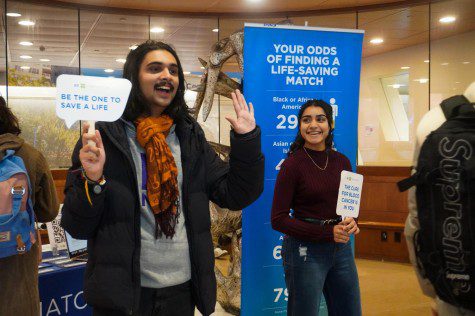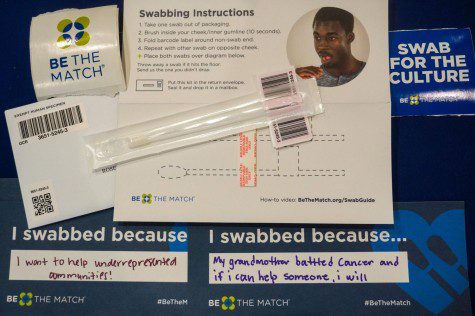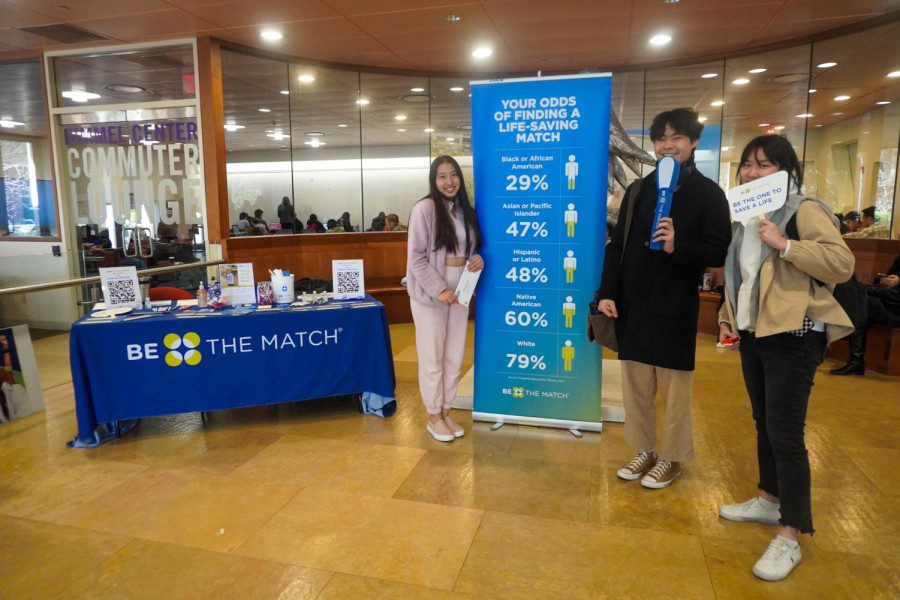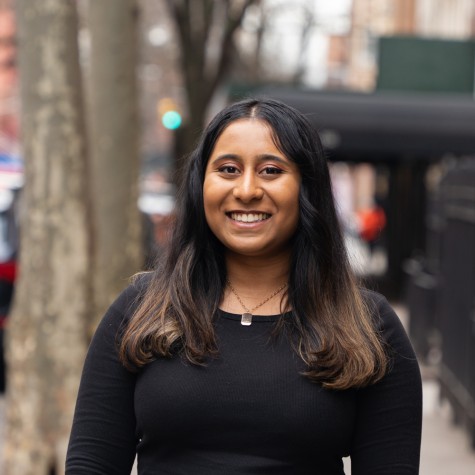Be The Match with a stem cell donation that saves lives
Students organize with Be The Match to register NYU community members as blood stem cell donors and reduce health disparities in underrepresented communities.
November 15, 2022
For patients with life-threatening blood-related diseases, blood stem cell therapies or bone marrow transplants are the only cures. While technologies for life-saving treatments have improved over the years, racial and ethnic disparities for matching patients to donors persist — Be The Match hopes to change that.
Be The Match is a nonprofit organization that manages the largest marrow registry globally. For patients with blood disorders like sickle cell disease, or life-threatening blood cancers like leukemia and lymphoma, cellular therapies replace these patients’ unhealthy blood-forming stem cells with stem cells from adult donor matches between the ages of 18 and 40.
Sickle cell disease affects approximately 100,000 Americans and occurs for one out of every 365 Black or African-American births, and about one out of every 16,300 Hispanic-American births. Around 1.24 million cases of blood cancer occur globally every year, with an estimated 186,400 people in the United States expected to be diagnosed annually.
“One of the people that I used to dance with back home, she was unfortunately diagnosed with leukemia about a year ago,” Tisch first-year Isabelle Goussen said. “So I love to help just for the betterment of mankind, but this felt a little personal. So any way that I can help improve things that are as drastic and life changing as types of blood cancer, I want to be able to make sure that I can at least do my part, no matter how small.”

NYU’s premedical chapter of the Asian Pacific American Medical Student Association partnered with many clubs — including American Medical Students Association, Delta Epsilon Mu, Society for Undergraduate Neural Science and the NYU’s Biological Society — for this recruitment effort from Monday, Nov. 14, to Wednesday, Nov. 16. Grace Xiang and Ethan Bakal, CAS seniors and co-presidents of APAMSA, said they wanted the NYU community to be involved to join the registry.
“There’s a large bias in the bone marrow registry in that white Americans are disproportionately overrepresented in the registry, but there is a severe underrepresentation of Black and African Americans, Hispanic and Latinos and Native Americans, as well as Asians and Pacific Islanders,” Bakal said. “It’s really important that we get people of color to come out and join the registry, and so a lot of Be The Match’s efforts focus on recruiting these groups, so that they can help save the lives of other people of color.”
Ethnic background is a predictor for finding a blood stem cell match, which relies on similarities in inherited human leukocyte antigen markers. As a result of publicized inequities in stem cell registry, the odds of finding a match disproportionately disfavor people of color, with the breakdown as follows — 29% for Black or African Americans, 47% for Asian or Pacific Islanders, 48% for Hispanics or Latinos, 60% for Native Americans and 79% for white people.
LS first-year Joshua Martinez registered with Be The Match because they aim to increase the diversity of the ethnic backgrounds of the donor registry and the likelihood that underrepresented groups find a match.
“I saw on the poster that Hispanics or Latinos are 48%, and if I have the opportunity to help my community, why not?” Martinez said. “My mother also suffers from a blood disease, so she’s one of the main factors why I decided to do it today. And she’s never had to get a blood transfusion or anything. But if she did have to get there and I am not compatible with her, I would love someone else to do it for me.”
Because NYU has an extremely diverse campus, Bakal believes the university community can play a huge role in registering people of all different backgrounds. From the first day of tabling alone, 111 members of the NYU community registered and swabbed their cheeks for their HLA type used in the match process.

“If you are of a specific ethnic background, you are so much more likely to be matched for someone of that same specific ethnic background, who is in need of a transplant,” Bakal said. “Many people need these transplants, and there’s no good alternative for treatment. So, this is really a way that you can save a life.”
Lizbeth Hernandez, Be The Match’s account manager for New York, said there’s a lot of patients who don’t have a match within their family, and turn to Be The Match’s registry to find a committed match.
“The worst thing that can happen is someone signs up, and then, they get a call, and they say no to their process, and then, unfortunately that’s a family’s hope that gets shattered and also, unfortunately, people have passed away because their matches have said no to them,” Hernandez said. “It is really, really important that people sign up that want to save a life, and they’re committed, and they are empowered to say yes.”
If someone is identified as a life-saving match for a patient in the future, they volunteer as peripheral blood stem cell or bone marrow donor. About 85% of donors provide a peripheral blood stem cell donation, a nonsurgical procedure, similar to donating plasma or blood, that collects the blood-forming stem cells circulating in the bloodstream. Fifteen percent of donors — for pediatric patients and those with very rare blood disorders — provide a marrow donation, where stem cells are collected from the pelvic bone.
Steinhardt first-year Sarah Wrye understands how integral stem cell donations are, as her grandmother did not receive treatment.
“My grandmother battled cancer for years, and there wasn’t anything really like this to help her at the time,” Wrye said. “She recently passed away a year and a half ago. So if I can do something for somebody else, I will.”
To learn more about blood stem cell donation and register on the match list, find Be The Match and APAMSA at the Kimmel Grand Staircase on Tuesday, Nov. 15, from 12-5 p.m. and at Weinstein Residence Hall on Wednesday, Nov. 16, from 1-6 p.m. You can also register on their website to receive a swab kit via mail.
Contact Roshni Raj at [email protected].

























































































































































